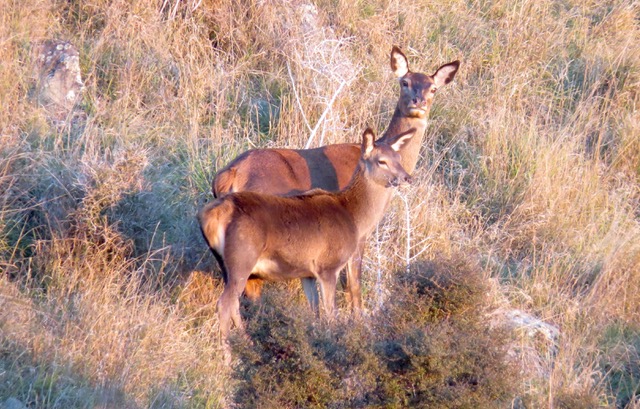Many believe – among them ecologists – believe the world is beset with a massive extinction, the sixth mass extinction which comprises the five previous catastrophic events over the past 600 million years, during which up to 95 percent of the planet’s species disappeared. That is according to Yale Environment in the US but with a note of caution about such assumptions.
But as it warns, “we may very well be. But recent studies have cited extinction rates that are extremely fuzzy and vary wildly.”
The Millennium Ecosystem Assessment, which involved more than a thousand experts, estimated an extinction rate that was later calculated at up to 8,700 species a year, or 24 a day. More recently, scientists at the U.N. Convention on Biological Diversity concluded that “Every day, up to 150 species are lost.” That could be as much as 10 percent a decade.
Computer Modeling
“But nobody knows whether such estimates are anywhere close to reality. They are based on computer modeling, and documented losses are tiny by comparison. Only about 800 extinctions have been documented in the past 400 years, according to data held by the International Union for the Conservation of Nature (IUCN). Out of some 1.9 million recorded current or recent species on the planet, that represents less than a tenth of one percent.”
Nor is there much documented evidence of accelerating loss says Yale Environment.
In its latest update, released in June, the IUCN reported “no new extinctions,” although last year it reported the loss of an earwig on the island of St. Helena and a Malaysian snail. And some species once thought extinct have turned out to be still around.
“Doc” Orbell
Of course there was the notable New Zealand example of the takahe or notornis which deerstalker the late Dr Geoffrey Orbell discovered in a remote valley in Fiordland.
But often missed by those adding to the “endangered” list is that loss of species can be a natural occurrence. An estimated 99% of all species that existed have become extinct.
It has to do with fitness for survival in changing ecosystems/habitats.
The changes that occur – which may be natural for example natural climate change resulting in changes to habitat or human activities of exploitation – favour the survival of some species and the decline and extinction of other species.

“Doc” Orbell in retirement years. Photo Tony Orman
Pre-European Losses
It is true that human activities cause changes to ecosystems that favour the survival of some species and are detrimental to that of others. For example nine species of moa disappeared in the wake of human arrival. also the giant Haast Eagle went into oblivion as did other species such as adzebills, endemic geese, teal, snipe, rails and others.
It is very unlikely that humans will stop growing in numbers (increasing demand for resources) and mining things to live and support the economic “system” of consumerism so ongoing effects on ecosystems are inevitable and “natural”.
Emotions – Not Facts?
Perhaps the opinions of some people about extinctions of species and the consequences might be based more on emotions than factual evidence.
The NZ assumption that introduced species have to be eradicated in order to enable the survival of “indigenous” ones might not be as valid as the propaganda encourages us to believe.
For example trout were introduced and native fish coexist with them despite hysteria calling trout “invasive predators.” True they do predate on other species such as whitebait, aquatic invertebrates such as caddis and mayflies. But nature settles into a new equilibrium following introduction of a species. In the case of trout young trout are preyed on by native eels and native cormorants (shags).

Red Deer. photo Tony Orman
Habitat Key
Habitat regulates populations, i.e. the carrying capacity of the habitat. Deer were introduced, arguably replacing the ecosystem’s browsing component of moa and other avian browsers as some scientists have observed. A study in the late 1950s by an American scientist Thane Riney employed by the NZ Forest Service, of a remote area in Fiordland that had virtually never been hunted showed the herd had reached and over-stepped the carrying capacity of the habitat, and then “crashed” downwards to a much lower level within the dictates of the carrying capacity.
It represented the classic graph “bell curve” of rise and fall to a lower, stable level of a species.
The phobic furore about introduced species is not practical. It is a very selective argument. For example those afflicted with the dislike – even amounting to hatred – of introduced species, conveniently ignore farm stock, garden plants, pasture species and beneficial introductions like bumble bees.
What its needed is a common-sense, practical approach based on the realisation we live in a naturally evolving 21st century ecosystem if which humans are just one species.
And ecosystems will continue to evolve.

This is a well written piece which makes valid points. Endangered species can be a moot point. The Department of Conservation has a penchant for pointing to endangered species, partly because I suspect, such causes result in more vote money allocated and jobs and “empires”.
Ironically it is DoC’s policies or inaction that are causing genuine endangered status for a species. The kea once abundant throughout most of the 20th century suddenly went into decline from about 1990. Before that for a century it was abundant and even bounties were paid because of high country sheep deaths.